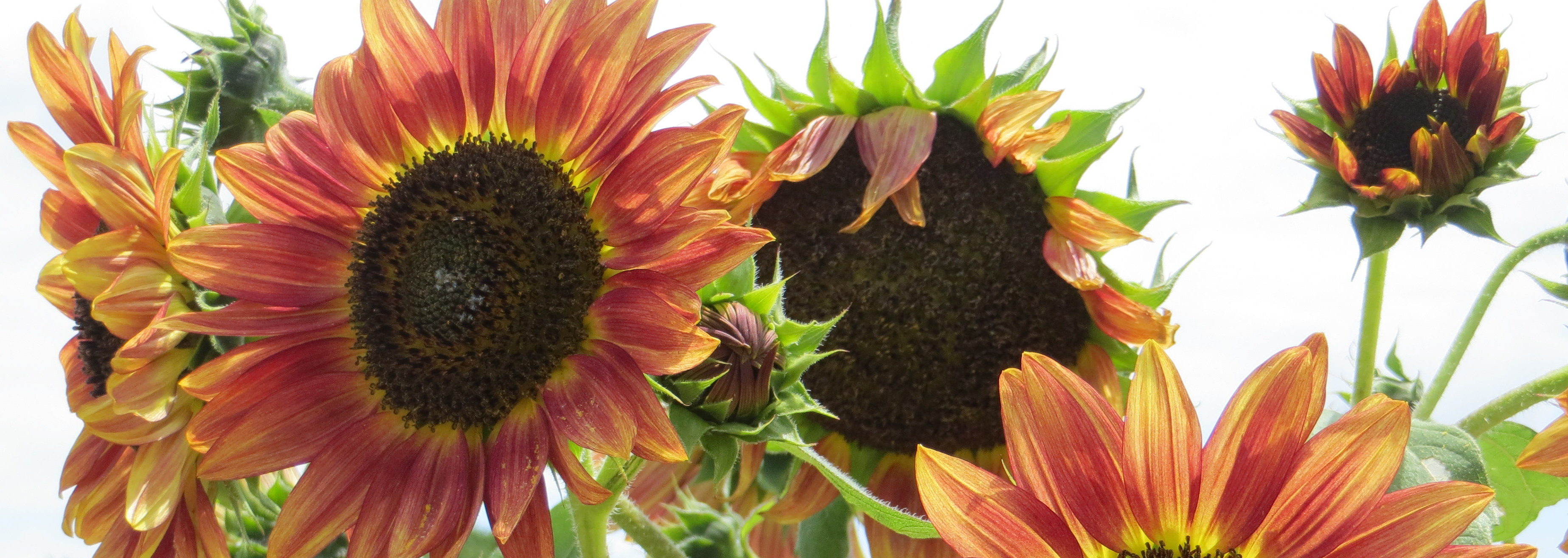In with the good….
Generally our approach to pest control in the garden.
This is a topic we get lots of questions about, so today I thought you might enjoy a look through how we take care of pest control at Gopher Knoll. You know, of course, that we do not use any chemical pesticides in the garden – but that doesn’t mean we do nothing at all to keep pests at bay.
Companion planting:
This little flower, nestled among the lettuces, down rows of kale and even between okra plants,is called Sweet Allysum. According to Agricultural Research Service (USDA), this little flower has real power in eliminating aphid problems from organic operations. “Lettuce growers in California’s central coast plant alyssum to attract adult hoverflies that feed on the flower’s pollen and nectar. After eggs laid by the well-fed females hatch, the voracious larvae prey on currant-lettuce aphids—important primary insect pests of lettuce in the region.”
Other studies have indicated that interplanting as little as 1 allysum plant every 20 feet can be sufficient to control aphids in lettuce fields. Pretty amazing pest control for a little flower.
This is our first year to interplant this particular flower. I expect (hope) that it will reseed itself and come back annually. That would be easier in a no-till garden (which we are not, yet.) We’ll let you know how it goes.
Another companion planting idea we use is planting radishes among the cucumbers and squash to discourage cucumber beetles and squash bugs and borers. A quick google search for “companion planting pest control” will take you to a variety of possibilities.
Encouraging the good guys:
We generally have plenty of ladybugs in the garden and they and their larvae eat plenty of aphids and potato bug eggs, but not all the helpful insects are well established in our garden yet, so we actually release extra every year.
Trichogramma wasps are really effective at reducing damage by all kinds of caterpillars – tomato hornworms, corn earworms, cabbage loopers, etc. We introduce these by ordering wasp eggs that come attached to a small strip of cardboard. We tack a strip to bushes or trees in the garden area and allow them to hatch naturally. We’ve done this a couple of times each spring for three years now with visible results.
This year, we also released Green lacewings, which are effective against aphids.
I admit to having been a bit of a skeptic about this one originally. I couldn’t see how a few tiny wasps released into the big world could have much effect. I was wrong. This works.
Insecticidal soap:
Of course, fire ants are a problem for everyone in East Texas. We use old coffee grounds to encourage ants to choose another place to live (see below), but when a mound gets out of control, a drench with a blend of orange oil and soap will take it out without too much collateral damage. We use just one ounce of orange oil and a squirt of liquid soap to a gallon of water. Pour the liquid slowly into the ant bed to allow it to soak in deeply.
Soap itself is a broad spectrum pesticide – meaning, it will kill the good guys as well as the bad – and some soaps can contain chemicals we would not want to introduce to the garden. It works because the fatty acids in the soap “dissolve” the cell membranes of the insect, allowing cell contents to leak out and the insect quickly dies. We use Dr. Bronner’s pure castille soap – made from organic olive oil – and only in very controlled and limited applications. For example, in addition to the occasional drenching of an ant bed, we might use a mild (1 tsp per quart of water) solution to occasionally spray squash bug larvae if other control measures don’t provide adequate control
Be aware that soap only works when sprayed directly on the pest or when the pest contacts a wet solution. It will not kill any bug that crawls over or even eats a leaf that has been sprayed and the soap has dried. Use it carefully in late dusk after the bees have gone to bed, to avoid accidental exposure of wet soaps to your honeybees.
Soap can be phytotoxic (damaging) to some plants, so test just one plant and wait a day or two before using again so you’ll know how it affects any plant you choose to use it on.
Coffee:
Oddly enough, a good many bugs and other critters including ants, slugs, and flea beetles, don’t seem to like coffee as much as I do.
Nice.
That means I can sprinkle used coffee grounds (or fresh really cheap old coffee grounds) around the perimeter of the garden and encourage many bugs to simply go a different direction.
I sprinkle them around the blueberry bushes and other acid-loving plants, as well – just to help keep the soil pH down in those areas. I also sprinkle grounds down rows of lettuce or greens, around okra, etc. to help eliminate ant problems there.
The operative word here is “sprinkle”. Not large quantities. Small quantities can also be fed to worms or added to your compost.
A few other ideas that we use selectively include using basil tea (in off season, made with a drop of basil essential oil) to control aphids in the greenhouse. And I will plant lemon balm and sprinkle crushed lemon balm leaves among the squash and melon plants to discourage squash bugs. Note: lemon balm is in the mint family – and it can become invasive if planted directly into the garden. Try planting it in a pot that is buried in the location you want it – easy to pick up in the fall, too. 🙂
You have ideas you use? I hope you’ll post a comment and share!






